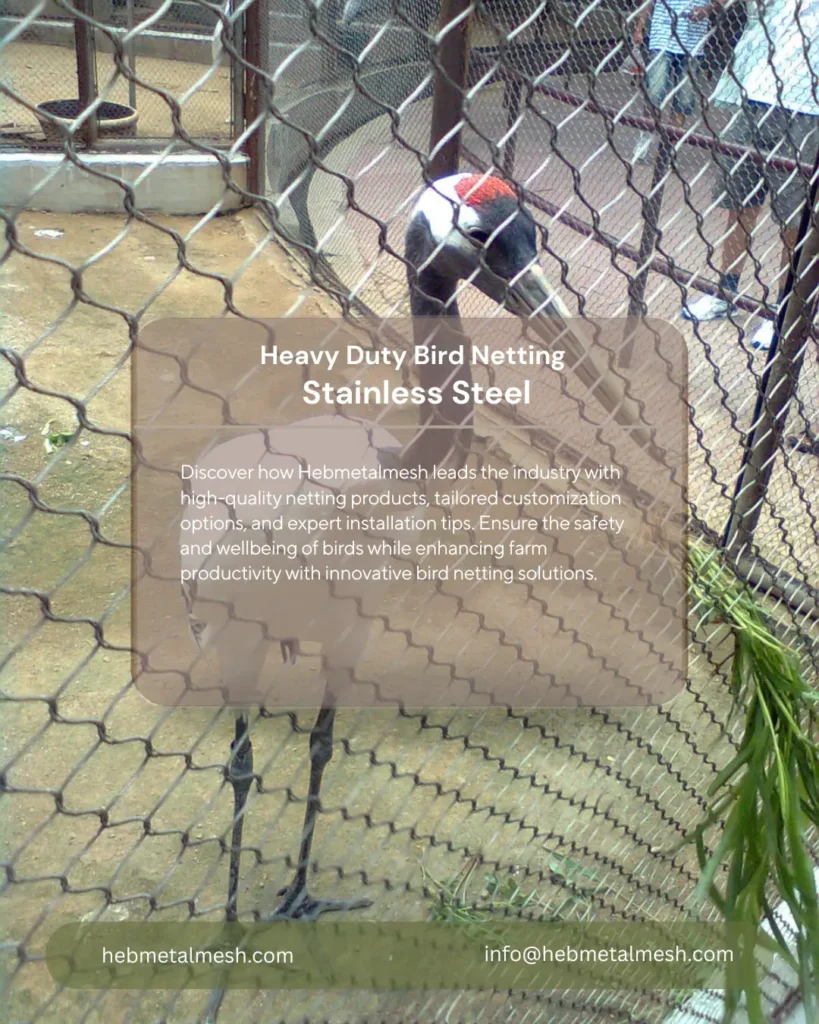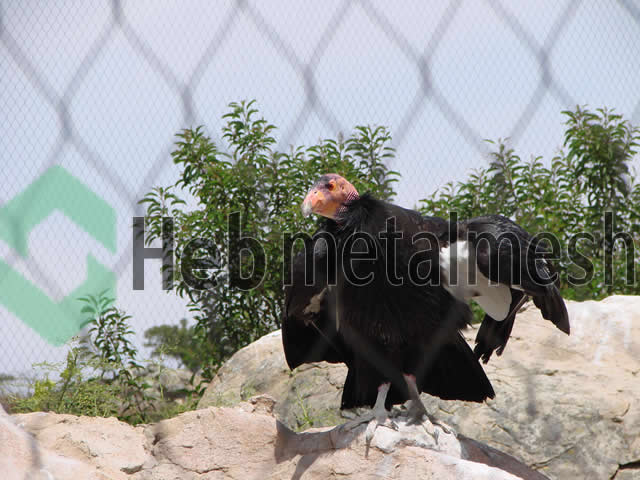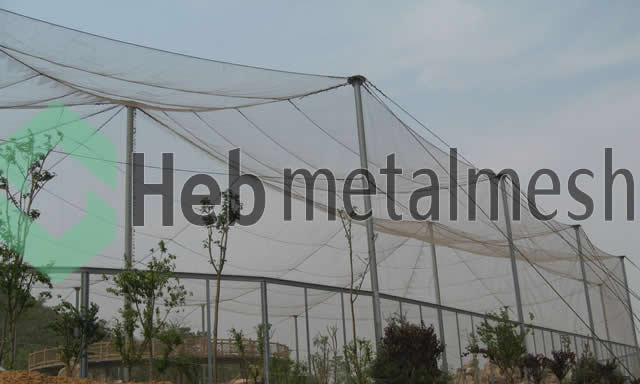Introduction to Bird Enclosures
Bird enclosures, also known as aviaries, are specially designed structures that provide birds with a safe and secure environment, allowing them to thrive while protecting them from potential dangers. They serve multiple purposes, ranging from safeguarding domestic birds in residential spaces to offering sanctuary for wild birds during rehabilitation. These enclosures cater to the needs of avian species by providing adequate space for movement, socialization, and exercise, which are vital for their overall well-being.
The importance of bird enclosures cannot be overstated, as they play a critical role in conservation efforts and ensuring the safety of birds from natural predators, harmful weather conditions, and human-related threats. For enthusiasts and bird lovers, aviaries offer a way to closely observe these fascinating creatures while allowing them to exhibit natural behaviors in a controlled setting. This dual purpose of entertainment and conservation highlights the significant impact that well-designed enclosures can have.
When considering the design of bird enclosures, numerous factors such as size, structure, and material must be accounted for. High-quality materials are paramount to ensure the durability and safety of the birds housed within. Among various options available, stainless steel aviary netting stands out as an ideal choice due to its strength and resistance to corrosion. This material not only protects birds from external threats but also minimizes wear and tear over time, making it a long-term investment for any aviary.
In the following sections, we will delve deeper into the different types of bird enclosures available, their specific advantages, and how choosing the right materials can enhance the safety and livability for birds, both domestic and wild. By understanding these elements, one can make informed decisions that prioritize the health and happiness of avian residents.
The Benefits of Using Stainless Steel for Aviary Netting
When selecting materials for bird enclosures, stainless steel stands out as the superior choice, particularly in the context of aviary netting. One of the primary advantages of stainless steel is its exceptional strength. This robust material can withstand significant stress, which is crucial for keeping birds safe from external predators. Unlike traditional materials such as nylon or plastic mesh, stainless steel does not succumb to tearing or stretching, ensuring that the structural integrity of the aviary remains intact over time.
Longevity is another compelling reason to choose stainless steel for aviary applications. Stainless steel is notably resistant to wear and tear, allowing for a longer lifespan compared to other metals and synthetic materials. In a setting where damage from weather conditions, bird activity, and aging can compromise the safety and function of an enclosure, stainless steel offers a reliable solution. This investment in quality translates to less frequent replacements and a reduction in maintenance costs associated with the aviary.
Corrosion resistance further enhances the case for stainless steel. Aviaries are exposed to varying environmental conditions, including moisture and humidity, which can lead to rust and deterioration in inferior materials. Stainless steel, particularly the grade typically used in aviary netting, is designed to resist corrosion, ensuring that your bird enclosure remains secure and visually appealing over its lifetime.
Lastly, stainless steel aviary netting is safer for birds compared to other options. Its smooth, metallic surface minimizes the risk of injury, while its sturdy frame helps prevent potential escapes. Overall, the use of stainless steel in bird enclosures not only protects avian inhabitants but also provides peace of mind for bird enthusiasts and caretakers alike.
Introduction to Hebmetalmesh and Its Products
Hebmetalmesh is an established manufacturer renowned for its specialization in stainless steel aviary netting. With a rich history spanning several decades, the company has built a strong reputation for excellence in the production of high-quality products designed specifically for bird enclosures. Their journey began with a vision of providing durable and reliable materials that ensure the safety and comfort of avian species while allowing them the freedom to thrive in enclosed environments.
As a leading supplier in the industry, Hebmetalmesh leverages cutting-edge technology in its manufacturing processes. The company employs advanced techniques to produce stainless steel me4sh that meets stringent quality standards. This commitment to innovation ensures that their aviary netting is not only robust but also offers longevity and resilience against environmental factors. The stainless steel used in their products is resistant to rust and corrosion, making it ideal for outdoor applications where exposure to the elements is a concern.
Hebmetalmesh places a significant emphasis on quality control throughout the production process. Each roll of aviary netting undergoes rigorous testing to ensure it meets the specifications required for various bird enclosure applications. This meticulous attention to detail has positioned Hebmetalmesh as a trusted name among professionals and enthusiasts alike.
In addition to their high-grade aviary netting, Hebmetalmesh also offers a wide array of related products designed to complement their primary offerings. Customers can find a variety of fittings, tools, and accessories that facilitate the installation and maintenance of bird enclosures. This comprehensive product range, combined with their expertise and dedication to customer service, underscores Hebmetalmesh’s role as a leader in the avian enclosure industry.
Types of Stainless Steel Aviary Netting Available
Hebmetalmesh offers a diverse range of stainless steel aviary netting options, designed to cater to the unique requirements of different bird species and their habitats. The primary variations of this netting are distinguished by factors such as mesh size, wire thickness, and flexibility, each serving a specific purpose in avian care.
The mesh size is a crucial consideration when selecting stainless steel aviary netting. Smaller mesh openings are essential for housing smaller bird species to prevent escapement and ensure their safety from predators. Common options include mesh sizes ranging from 1/2 inch to 1 inch. Conversely, larger birds often thrive in enclosures with bigger mesh sizes, which allow for adequate ventilation and visibility while maintaining security. Thus, understanding the specific needs of the bird species is key to making the right choice.
Wire thickness is another important factor that impacts the structural integrity and safety of the aviary. Hebmetalmesh provides a variety of wire gauges to suit different applications. Thicker wires can withstand more vigorous activity and offer increased durability, while thinner wires are lighter and more flexible, making them suitable for less aggressive species or smaller enclosures.
Flexibility is also an essential characteristic of stainless steel aviary netting. Different enclosures may require varying degrees of flexibility to accommodate their design. For example, netting used in a large, open aviary may benefit from a more rigid structure for stability, while netting intended for smaller, intricately shaped enclosures may need to be more pliable to ensure a seamless installation.
In summary, the variety of stainless steel aviary netting types offered by Hebmetalmesh ensures that bird enthusiasts can select the most appropriate solution for their specific needs, ultimately enhancing the well-being of the avian residents. Through careful consideration of mesh size, wire thickness, and flexibility, each aviary can be tailored to suit its inhabitants perfectly.
Installation of Stainless Steel Aviary Netting
Installing stainless steel aviary netting is an essential step for creating a secure and effective bird enclosure. Proper installation will not only enhance the safety of the birds but also extend the longevity of the netting itself. Below is a guide outlining the required tools, preparation, and best practices for a successful installation.
To begin, gather the necessary tools: a measuring tape, wire cutters, a drill with appropriate bits, a staple gun, safety gloves, and a pair of goggles for protection. It is also advisable to have anchors and screws on hand, as they will be used to secure the netting effectively. Once your tools are ready, take time to prepare the installation area. Clear any debris or obstructions within a reasonable range and ensure the surfaces where the netting will be mounted are stable and clean.
Next, measure the dimensions of the enclosure accurately, considering the desired height and width for the aviary netting. This will allow you to cut the netting to the correct size before attaching it. When sizing your netting, ensure to account for any overlap needed at the corners and edges, which is crucial for a secure fit.
Once the netting is cut, position it against the framework of your bird enclosure. Begin fastening the top edge of the netting using the staple gun, ensuring it is taut to prevent sagging. Proceed to secure the sides and bottom of the netting with anchors and screws, paying close attention to keep the netting flush against the infrastructure. Maintaining tension throughout the installation is vital for the stability of the bird enclosure.
Finally, inspect the enclosure for any sharp edges or loose ends, as these can pose risks to the birds. Trim excess netting appropriately to ensure a neat finish. By following these steps, you will create a reliable and durable aviary that provides a safe environment for your birds.
Maintenance Tips for Your Bird Enclosure
Proper maintenance of your bird enclosure, particularly when utilizing stainless steel aviary netting, is crucial for ensuring the safety and longevity of the habitat for your avian companions. Stainless steel is renowned for its durability and resistance to corrosion, but regular care is still necessary to maintain its appearance and functionality. To begin with, routine cleaning is essential. Use a soft brush or cloth with a mild soap solution to gently clean the mesh and surrounding areas. Avoid harsh chemicals that could damage the netting or pose health risks to the birds. Rinse thoroughly with water to prevent any residue from remaining on the material.
In addition to cleaning, it is advisable to conduct regular inspections of the aviary netting. Look for signs of wear, tear, or rust that could compromise the enclosure’s integrity. Pay particular attention to areas where the netting may be exposed to sharp edges or excessive tension. Identifying minor issues early can prevent bigger problems from arising. It is also important to check the fastening mechanisms and joints for security and wear.
Monitoring the environment surrounding the aviary is equally vital. Ensure that the enclosure is located away from potential hazards such as aggressive wildlife or sharp objects that could damage the netting. Furthermore, pest activity should be managed carefully to avoid infestations that can affect the birds. By adhering to these maintenance tips and taking proactive steps to care for your stainless steel aviary netting, you can significantly enhance the safety and enjoyment of your bird enclosure. This attention to detail promotes a thriving environment for your birds while extending the life of the enclosure.
Success Stories: Bird Enthusiasts and Their Enclosures
Bird enthusiasts often seek reliable solutions to ensure the safety and comfort of their avian companions. A growing number of these passionate individuals have turned to Hebmetalmesh’s stainless steel aviary netting, reporting success in various applications. This innovative netting allows for enhanced bird protection, and its durability ensures long-lasting use, leading many customers to share their positive experiences.
One notable testimonial comes from a breeder who specializes in exotic birds. After implementing Hebmetalmesh’s stainless steel netting, she reported a significant decline in predation instances. The robust nature of the netting not only safeguarded her birds but also provided a visually appealing and breathable enclosure. She highlighted how the netting’s strength and resistance to corrosion have proven instrumental, citing that her aviary remains intact through harsh weather conditions—a testament to its quality.
In another case, an urban bird lover transformed their small balcony into a secure aviary using Hebmetalmesh’s stainless steel netting. They expressed satisfaction with the ease of installation and the aesthetic improvement it brought to their living space. The transparency of the stainless steel mesh allowed them to enjoy unobstructed views while ensuring their feathered friends could safely enjoy the outdoors. Over time, this enhancement has fostered a thriving environment for her birds, contributing to their overall well-being.
Additionally, testimonials from conservationists who utilize this netting for rehabilitation projects showcase its versatility. They emphasize how the steel netting supports both large and small birds, creating a safe haven for avian species before they return to the wild. The collective stories from these dedicated individuals demonstrate that choosing Hebmetalmesh’s stainless steel aviary netting not only meets the practical needs of bird enthusiasts but also fosters a commitment to avian welfare.
Comparative Analysis: Stainless Steel vs. Other Materials
When selecting an aviary netting, the material plays a critical role in the safety and well-being of birds. This section examines how stainless steel aviary netting from Hebmetalmesh compares to alternatives such as plastic and aluminum in terms of cost, durability, and bird safety. Each material presents distinct advantages and drawbacks, influencing the decision-making process for bird-keepers.
Stainless steel is renowned for its exceptional strength and durability, significantly outpacing plastic options. While plastic netting may initially seem more cost-effective, it often deteriorates quicker under environmental stressors like UV exposure and temperature fluctuations. In contrast, stainless steel aviary netting boasts a longevity that provides value over time, requiring less frequent replacements. The robust nature of stainless steel also provides a higher level of protection against predators, which can be a significant concern for bird enthusiasts.
Aluminum, like stainless steel, is a lightweight option that offers some level of protection. However, it generally falls short regarding strength when compared to stainless steel. In environments where larger or more aggressive animals may pose a threat, aluminum may bend or break, compromising the safety of the birds contained within the aviary. Stainless steel, with its inherent resistance to corrosion and rust, ensures the integrity of the structure is maintained, even in harsh conditions.
Bird safety is paramount when choosing an enclosure. Stainless steel aviary netting eliminates concerns associated with toxic materials often found in plastic products. Additionally, its smooth and finely woven design prevents birds from getting caught or injured, which is a common risk with coarser alternatives. The investment in stainless steel not only guarantees superior protection but also promotes the long-term health and safety of birds.
Conclusion: Make the Best Choice for Your Birds
Choosing the right materials for bird enclosures is a decision that should not be taken lightly. The structural integrity and durability of the avian habitat directly impact the well-being and safety of the birds. Throughout this guide, we have explored various aspects of bird enclosures, emphasizing the importance of utilizing high-quality materials. Among these, stainless steel has emerged as a superior option due to its strength, resistance to weather elements, and longevity. Stainless steel netting ensures that your birds are secure while allowing for optimal visibility, thereby creating a comfortable and enjoyable living space.
Hebmetalmesh offers a variety of aviary netting solutions designed specifically to meet the needs of bird enthusiasts and professionals alike. Their experience in the industry guarantees that you receive products that adhere to the highest standards of quality and safety. By choosing Hebmetalmesh’s stainless steel aviary netting, you can rest assured that you are investing in a reliable solution that will withstand the test of time. The corrosion-resistant features of stainless steel further enhance its usability in various environmental conditions, ensuring that your bird enclosure remains functional and aesthetically pleasing.
Additionally, when constructing a bird enclosure, it is essential to consider the specific needs of your avian residents. Factors such as species type, size, and the environment where the enclosure will be situated should guide your decisions. With Hebmetalmesh’s comprehensive range of options, you can easily find the perfect fit for your requirements.
In conclusion, selecting quality materials like stainless steel for your bird enclosures is crucial for ensuring the safety and welfare of your birds. By opting for Hebmetalmesh, you are making a prudent choice that reflects your commitment to providing the best possible home for your avian companions.
FAQs
A1: Stainless steel is strong, rust-proof, and non-toxic, ensuring a safe and long-lasting habitat. It is the ideal material for a durable and safe stainless steel bird enclosure that protects against the elements.
A2: Yes, we specialize in manufacturing custom stainless steel bird enclosure panels to your exact specifications, ensuring a perfect fit for any unique design, whether for a private aviary or a large zoo exhibit.
A3: Our mesh is designed with smooth, secure connections, providing a safe and secure bird enclosure netting that prevents injury to claws and beaks, making it suitable for everything from small finches to large parrots.
A4: Absolutely. The exceptional corrosion resistance of our stainless steel makes it perfect for heavy-duty outdoor bird enclosure netting, capable of withstanding sun, rain, and wind for decades with minimal maintenance.
A5: Our black oxide bird enclosure mesh offers a reduced-glare, natural aesthetic that is easier on birds’ eyes and blends seamlessly into garden or natural environments, enhancing the visual appeal of the aviary.


